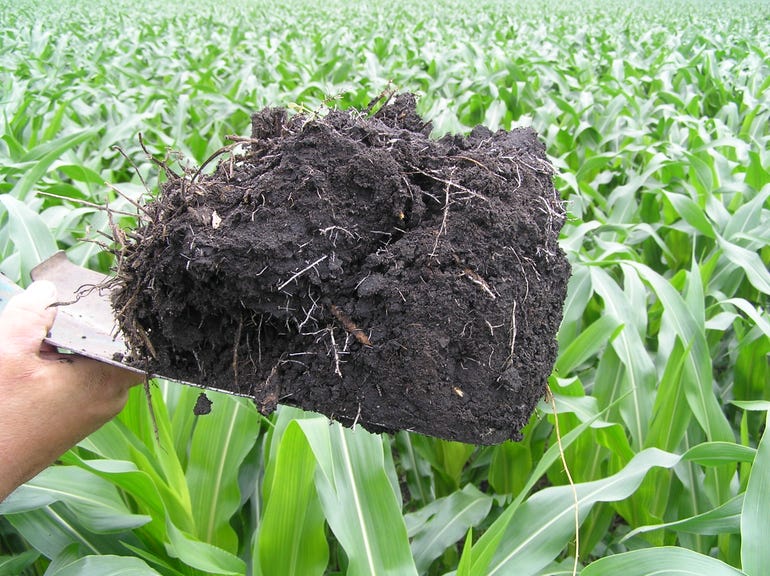January 22, 2018

Sponsored Content
Soil biology, soil fertility and building soil carbon – these are just a few of the buzz-words and phrases that swirl around agriculture. Some are tied to products, some to agendas and some just sound trendy. Consumers and food companies are starting to care about these topics, so agriculture responds. At a practical level, what does this mean and what actions make sense?
Farmers know that organisms live in the soil and can be very useful in maintaining soil structure, delivering mineral nutrients to crops and in helping manage pests and disease. Some activities, like excess tillage and harsh chemicals, can harm soil organisms. Some activities build soil life and its capacity to help your crop. Finding profit in these practices means doing more of the ones that help your soil life. Many of these practices are talked about frequently (limited tillage, lower salt index fertilizers, practical residue management, cover crops). Some of this discussion also includes “carbon”. What is that all about?
All living things are made up of carbon for about half of the dry weight of their bodies, more for wood and stalks and less for the fleshy bits. Thus, carbon and organic matter are linked. If organic matter is made up of the living things and once-living things in your soil, half or more of the soil organic matter is carbon.

All living things need to eat! We have a saying at Midwestern BioAg, “You get what you feed for”. If you feed simple sugars, you get lots of bacteria. If you feed complex carbohydrates (think woody tissue and stover), you are likely to be feeding fungi. Crop roots also feed soils. About a third of the sugars that crops make through photosynthesis are extruded out their roots as food for microbes, and even the roots feed microbes when they die post-harvest.
Applying carbon-based fertilizers is a way to feed your soil life. Carbon-based fertilizer is both a carbon source for soil life and minerals for a crop. The original carbon-based fertilizer is manure. While hard to spread and expensive to transport long distances, it works wonders for feeding a soil. Use it if you can get it. Cover crops are another wonderful way to feed the soil: they suck up soluble nutrients so that they don’t wash away, they extrude sugars through their roots to feed microbes and their biomass is another source of complex carbons when they die. They can also be turned into the soil as green manures in the spring.
More recently, products have emerged that combine carbon sources and mineral fertilizers in forms that can be used in precision agriculture. Liquid products combine sugars, like molasses, with minerals as starters, side-dress and foliars. Dry, granulated products are emerging that combine carbon with dry minerals in precise formulations. These products work with the precision application tools available on many farms. In each case, the carbon feeds soil life exactly at the location that the mineral is delivered. These minerals are “stored” in the soil life. As crop roots grow, they release sugars, stimulating more microbial activity. As these growing microbes excrete waste or are eaten, the nutrients are released, right there where the roots need them. It is “on-demand” fertility for the crop. It results in higher yields and more efficient nutrient use than soluble fertilizer alone.
The latest technology in farming today involves re-discovering the tools that allow the soil biology to deliver nutrients to a crop in a more profitable way. Before you try adding new microbes to your soil, make sure that you are feeding what you already have. Your soils will thank you!

About the Author(s)
You May Also Like




